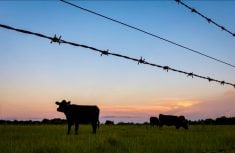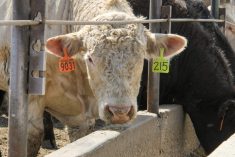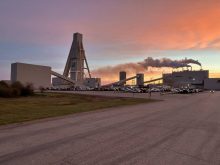MarketsFarm — Fertilizer prices have increased over the past year, but could be headed even higher as a recent confluence of events has caused a shortage — the effects of which may affect producers past the New Year.
“Particularly, in the last few weeks, there have been a number of supply events which have really added up and tightened the market significantly,” said Chris Lawson, the New York-based head of fertilizers for CRU Group.
Increased demand by producers, combined with higher prices for urea, phosphates and potash, had already caused the price of fertilizer to rise. Then, Hurricane Ida shuttered nitrogen plants along the U.S. Gulf Coast and a rally in European natural gas prices earlier this month forced Yara International and CF Industries to curtail and even shut down production at their nitrogen plants across the Atlantic.
Read Also

U.S. grains: Soy hits 17-month high, corn to four-month top as trade braces for U.S. data
Chicago Board of Trade soybean futures rose on Thursday to their highest in nearly 17 months as traders awaited a U.S. government crop report that was expected to lower yield estimates, while also bracing for the resumption of export data to give clues on Chinese buying.
Sanctions on major potash exporter Belarus, production cuts and export limits in China, and supply chain disruptions are also not helping matters.
“It’s a perfect storm of supply events right now. We’re in a pretty crazy market,” Lawson added. “I’d say nitrogen fertilizer (prices have) moved the highest because of the issues in Louisiana and the issues in Europe. Those are where you make fertilizer with urea and UAN (urea ammonium nitrate), a liquid form of nitrogen which is quite popular in Canada.”
Chuck Fossay, director of grains, oilseeds and pulses for Keystone Agricultural Producers (KAP) of Manitoba, said producers are feeling the impact of reduced supply and higher costs.
“Everybody’s watching the prices to see if they’re going to continue going up, plateau, or start working their way down if some of the supply issues work themselves out,” he said, adding that fertilizer prices have gone up 60 per cent compared to last year, with urea now costing up to 75 cents/lb.
“Right now, most of us are in a ‘wait-and-see’ position,” Fossay said.
Fossay advises KAP members to conduct soil tests on their fields as well as a cost analysis to determine which type of fertilizer to use. He said fertilizer costs may reach their low point during the holiday season, but Fossay admits waiting until then to buy may be a gamble.
Lawson added that fertilizer is just one of many aspects of crop production seeing higher costs, but higher prices for crops may soften the blow.
“All inputs (into crop production) have gone up through the course of the last year or so. It’s not just fertilizer. It’s things like glyphosates, as well, and the cost of machinery is moving higher if a farmer can get his hands on it. The farm budget is certainly being pushed up,” he said.
“The longer these prices continue to move higher, the profit margins are going to be squeezed more and more…(But) we should see continued high prices for commodities over the next 12 months.”
Lawson predicts fertilizer prices may come down by December only to return back up next spring, but 2022 could provide much-needed relief for producers.
“We do anticipate a fairly steep drop-off in prices during the second half of 2022. We do think that the market and supply issues will be ironed out (by then),” he said.
— Adam Peleshaty reports for MarketsFarm from Stonewall, Man.














